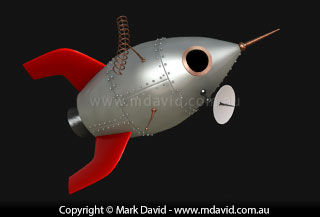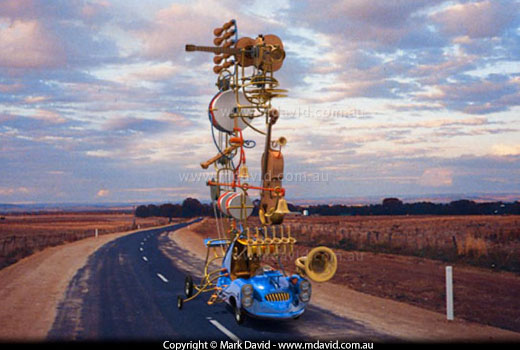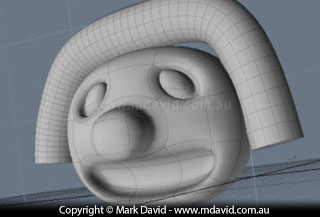Don’t you hate it how every bit of software these days is claimed to be intuitive? And when you buy it you get stuck in the first ten seconds. You start wondering if it’s just you. Believe me, it’s not just you. Learning to use 3D software is like everything else. It takes time.

Trust us! It’s intuitive
Umm… No, it’s not.
Learning software is like learning a language. Just because you’ve picked up English doesn’t mean you can start speaking French too. But if you can already speak five languages it’ll be easier to pick up a new one. Likewise, the more 3D programs you know the easier it is to figure out another. If you don’t know any 3D at all then it will probably take a while, as you learn the fundamental concepts and workflow.


Perhaps the best thing about 3D is that it lets you quickly show how imaginary things could look.
I once even saw a well-known developer claiming that learning to use their 3D software was like learning to use a pencil, where the challenge was not in understanding the software but rather, in improving your artistic talents. I don’t like that smug attitude and I’m here to say that it’s not that easy. However, to their credit, more software makers, including that one, are lifting their game a lot by providing many hours of outstanding video training materials showing you how to handle their software — something which, I might add, is not needed for pencils.
So is this stuff really hard? Well, it’s complicated, but put in the hours and pretty much anyone can learn enough to start enjoying it. And there’s a lot to enjoy.
What’s involved?
Lots of time. The more, the better. Experience in other software helps a lot but isn’t essential. You’ll also have a big advantage if you can draw or if you’re experienced in animation. For example, anyone can learn how to get a 3D program make something move, but if you’ve got experience in animation you’ll be able to make the thing move in a convincing way. You’ll have a better feel for what to tell the software to do.
If you get the chance, watch someone who already knows how to use the software. Seeing something demonstrated can cut heaps off your learning time. That’s why I’m such a fan of on-screen movie tutorials. You get to see an expert explaining and demonstrating the stuff at the same time.
If you throw yourself into it, doing or watching tutorials and setting yourself projects, then expect to spend about a few weeks or even a couple of months getting the feel for the basics of a medium-level 3D package.
What software do I use?
I use Cinema 4D. It lets me work fairly quickly, and it has a nice fast renderer.
I had a buddy called John Shakespeare (the well-known newspaper artist) teach me some basics and then I learned the rest of what I know about the program in my spare time. I’m used to its way of working, but I still only know a fraction of what it can do and I still often get stuck trying to figure out new things. That’s mainly my fault, because I don’t use the software every day. If you use it every day then the workflow, plus the way the software ‘thinks’, sticks in your head better and learning new stuff comes more easily.
They say that once you start learning this stuff you can keep learning forever. In fact there’s probably now too much for one person to fully master it all. That’s why a lot of the best stuff is done by teams, combining specialists in areas like lighting, modeling or animation.

When I wrote and illustrated my children’s book Crazy Cars I started wondering how the machines in the book would look in real life. So I fired up my copy of Cinema 4D and made this scene. The background is a photo I’d taken earlier, but the car is my 3D version of the Decibel Clangster.
What software would I recommend?
This is tricky. You see, I’m reluctant to suggest anything I haven’t used personally and I haven’t tried enough packages to be able to make any sort of meaningful comparisons. I don’t think I’m expert enough to go around telling people to hand over lots of money for one software package or another.

Power user: Hahaha! No way. After an hour spent in Modo all I could do was this. I felt really lost because I was so used to the way things were done in Cinema 4D. But I was still very impressed by it. It has some really good features. And of course, if you were experienced in lots of other 3D packages you would pick this up heaps faster.
I can however mention some software packages which I see a lot of other people using and these packages seem to have their own loyal fans. I’ve already mentioned Cinema 4D. Maya tends to be popular in studios creating content for the film industry. Studio Max has a lot of followers too.
Then there’s another package which I think is interesting and that’s Modo from The Foundry. I was impressed by it when I played with a demo and liked some of its features. I’m convinced it has a simple and efficient workflow — I just wish I could find it! You see, it’s that old thing about not being experienced in enough 3D packages (not because of anything wrong with Modo!) After an hour of playing I only got as far as the image above. However some of the features which I did figure out were really nice and seemed easier to learn than some of the other ways of doing things which I’ve seen.
So that’s a few choices but there are plenty of others.
I’ll add here that my observations are probably heavily influenced by my role as a freelance illustrator.
If you’re thinking of purchasing
One thing I recommend is to check the list of features before you buy any software package, to make sure it can do what you want. That probably seems obvious, but you might be surprised at what some of them actually won’t do. For example, some don’t do animation, some don’t do renders and some are only useful for modeling.
Make extra sure that your computer’s system requirements are up to the task of running the software, because 3D is very demanding on computers and you might be surprised at its requirements.
If possible, ask someone who uses that package about what it’s like.

It was interesting coming into 3D from a cartooning background. I had to work pretty hard trying to translate my cartoon drawing style into that third dimension.
Also, if you want a full-time job doing 3D then it’s probably a good idea checking to see what packages are used in the places you want a job.
And of course, since some 3D packages can cost thousands of dollars then the price of a software package will obviously be a significant issue for most of us.
Thankfully, some of the major players in 3D now offer demos or even special ‘learning editions’ of their software, letting us try before we buy. I’m a big fan of that approach.
Finally, whatever you might be thinking of buying, if you’re not prepared to spend a lot of time at first learning the software then maybe your money could be better spent on something else.
Summing up
Don’t think it’s your fault if you can’t make a 3D blockbuster movie in your first hour. It’s going to take time, and if you want to make a blockbuster you’ll need more than an hour, and a few hundred experienced specialists will come in handy too. But if you’re prepared to put in some decent learning time and set yourself some realistic projects then it’s possible to have a lot of fun with 3D.